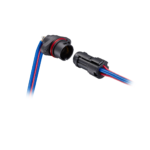ASIA ELECTRONICS INDUSTRYYOUR WINDOW TO SMART MANUFACTURING
JAE’s Connector Fits 5G mmWave Antenna Module
Japan Aviation Electronics Industry, Ltd. has launched the newly developed WP16RS Series high-frequency, full-shield type board-to-board (board-to-FPC) connector. The new series is ideal for connecting 5G millimeter-wave (mmWave) antenna modules or Antenna in Package (AiP) for smartphones and other small mobile devices.
The high-frequency shield type board-to-board (FPC) connector has been branded as Wave-stackTM.
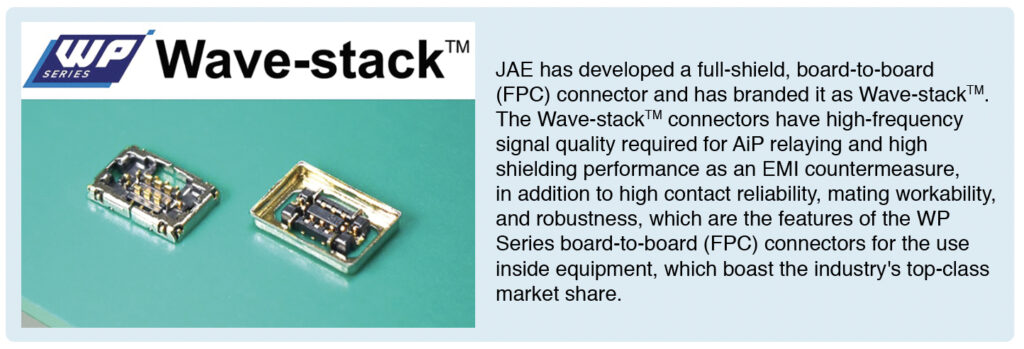
Background of Development and Usage
With the spread of fifth-generation (5G) mobile communication system, data communication of mobile devices, like smartphones, has been expanding. For the purpose of handling the increasing traffic, mmWave is being used in various countries because it enables high-speed communication 10 times faster than 4G with wider bandwidth. A mmWave-compatible smartphone is equipped with a mmWave antenna module called AiP. A new radio frequency (RF) connector is required for signal transmission between the AiP and the main board.
In smartphones, multiple AiPs are arranged in different directions for the compensation of mmWave directivity issue. The AiPs and the main board are connected through a high-frequency flexible printed circuit.
The signal received by the mmWave band communication is converted into an intermediate frequency in AiP. As seen in Figure 1, it is transferred through the connector (i) mounted on the AiP to the low-loss FPC with a connector, and then transferred to the main circuit through the connector (ii) mounted on the main board.
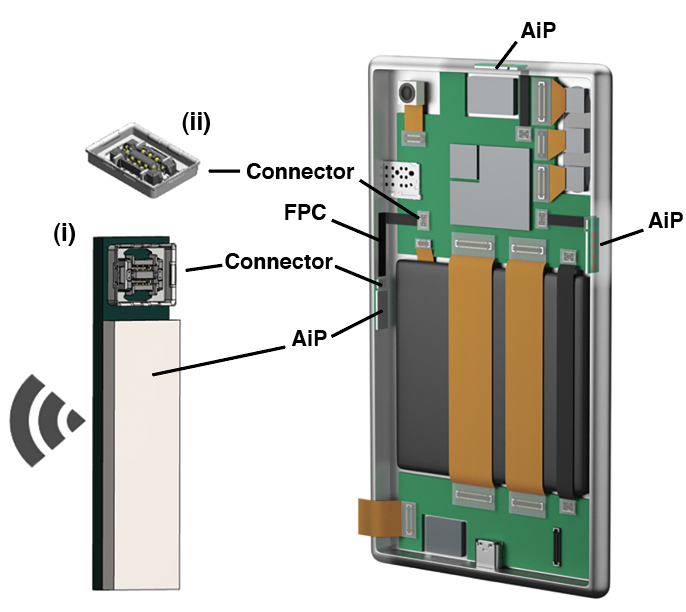
For the purpose of maintaining the characteristics of this transmission line at a high level, a board-to-FPC connector with high shielding performance and high frequency characteristics is required.
In such circumstances, the company has developed the WP16RS Series high-frequency, full-shield type board-to-board (FPC) RF connector, which is ideal for connection between AiP and the main board (Fig. 2).
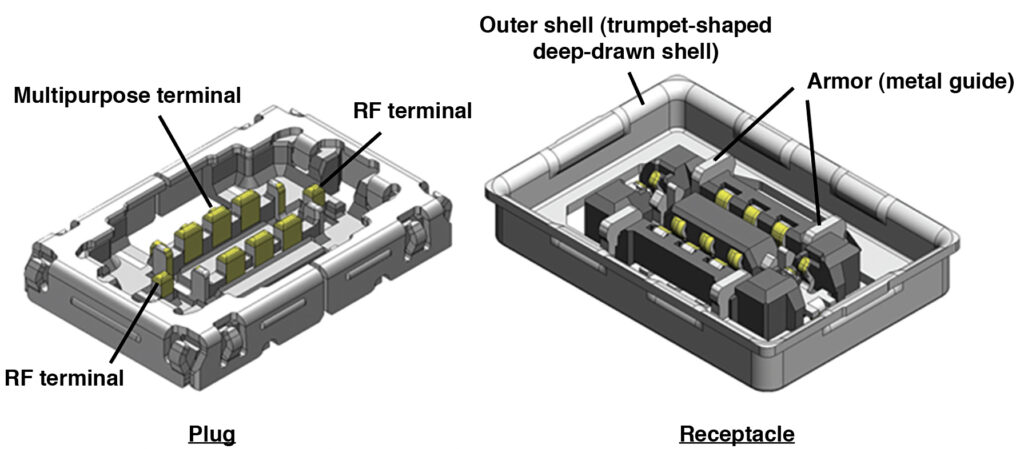
Product Features
Conventional board-to-board (FPC) connectors are required to have high-speed transmission, small size and low profile, and robustness. In most smartphones, low-loss FPC is usually used for the AiP relay, and therefore connectors are required to have further high frequency quality, electromagnetic interference (EMI) countermeasures to suppress radiated noises. Aside from the said features, it is required to have current transmission for the power supply of AiP.
In the development of WP16RS, the structure of the WP Series, which is a conventional board-to-board (FPC) connector, has been significantly improved to achieve industry-leading performance as an RF connector.
Feature 1: Fully-shielded structure
Even in the conventional WP Series, shield-type products with an EMI countermeasure for differential high-speed signals were lined up. However, the AiP transmission requires a higher level of shielding performance. Therefore, a fully-shielded structure has the entire terminal including the connector terminal (soldered part) covered with a shell.
Further, by adopting a squeezing shell for the receptacle, both robustness and shield performance have been greatly improved (Fig. 3).
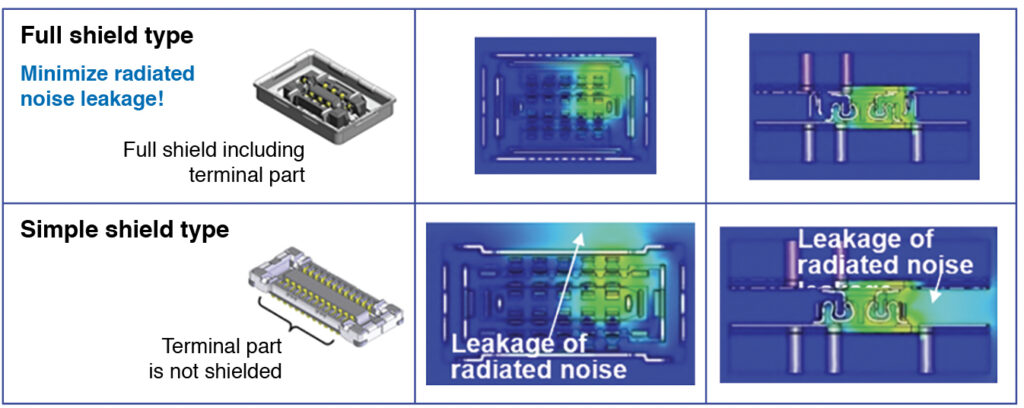
Feature 2: Industry-leading high-frequency signal quality
As AiP converts mmWave to intermediate frequencies, high-frequency characteristics of about 15GHz or lower are required for transmission lines including connectors. This is within the range that can be handled by the contact structure of the conventional WP Series. In the WP16RS Series, however, the connector should support transmission up to mmWave band and satisfy a lower loss in the future. Therefore, the company has newly developed a dedicated RF terminal that can realize stable characteristics in the high frequency band while having a two-point contact structure with high contact reliability. As a result, stable high-frequency characteristics have been achieved even in the mmWave band (Figs. 4 and 5).


Feature 3: Both miniaturization and power supply realized by new concept Logical-contactTM
The AiP relay requires the supply of signals other than RF and drive power. WP16RS is equipped with a six-pole multi-purpose (signal) terminal in addition to a two-pole RF terminal.
The fully-shielded structure increases external dimensions as a trade-off. For the purpose of suppressing this increase, the newly developed Logical-contactTM is used for the six-pole multipurpose contact. As a result, the conflicting problems of miniaturization and large current have been solved at the same time. Reduction of the size by 30 percent and three-fold increase of the allowable current in comparison to conventional products have been achieved (Fig. 6).
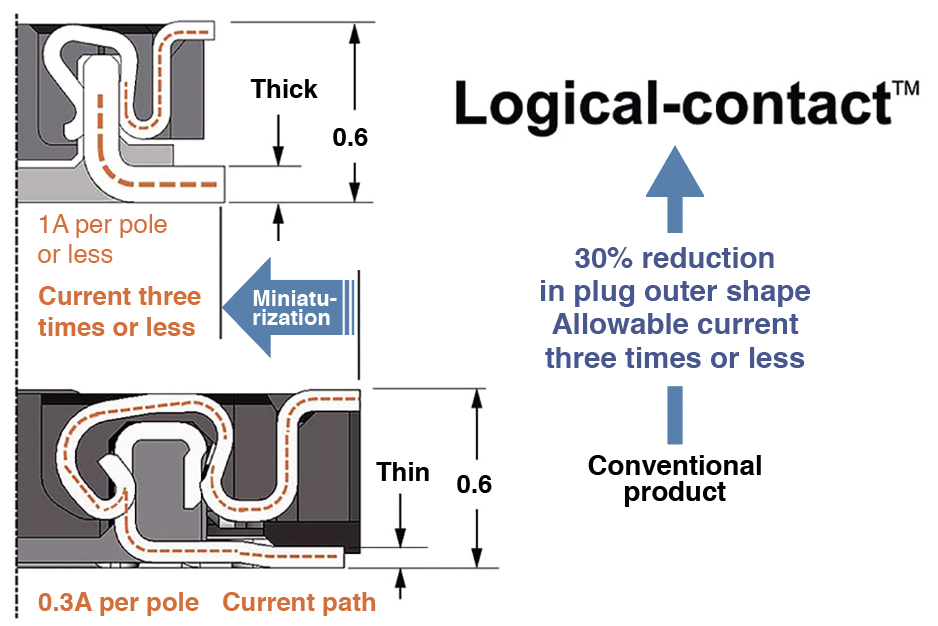
Feature 4: High robustness enabled by fully-shielded and full armor structure
The new connector achieves large alignment and high robustness using a trumpet-shape deep-drawn shell. When mating the connector, the alignment is achieved by the shell on the outer circumference of the connector and by the internal armor. Therefore, the connector has adopted a robust structure that does not easily cause damage caused by the interference between the terminal and the resin part even in case of offset mating.
Sample Applications Other than AiP
WP16RS is expected to be useful in various RF signal relay applications in addition to the AiP relay application mentioned above. Small coaxial connectors and coaxial lines have been used for antenna relay up to 6GHz in smartphones. However, the number of antennas increases with the higher functionality of wireless communication. When multiple RF signals are integrated into a board-to-board (FPC) connector and a low-loss FPC, space saving inside the equipment and optimization of the assembly cost can be expected.
The replacement of the conventional coaxial connector with the WP16RS connector contributes not only to the superiority of high frequency characteristics but also to the reduction of the area occupying the board down to a half. This will promote the optimization of the mounting area of the board which is moving toward higher and higher density (Fig. 7).
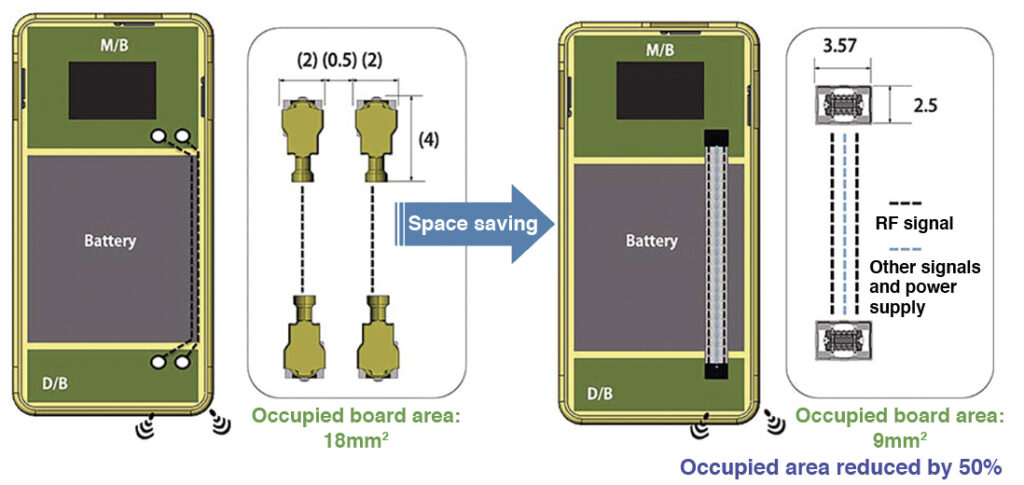
Future Outlook
In the future, the progress and spread of wireless technology will further continue, and high-frequency shield-type board-to-board (FPC) connectors will play an active role in much wider application area. The series has been branded as Wave-stackTM, such that customers can easily select high-performance, high-quality, and high-frequency shield-type board-to-board (FPC) connectors.
The company will continue to develop the series for Wave-stackTM, support high quality connectors with a wider range of applications and specifications for ICT equipment, and provide technology that supports the connected society.
About This Article:
Japan Aviation Electronics Industry Co., Ltd. provided the contents of the article.

